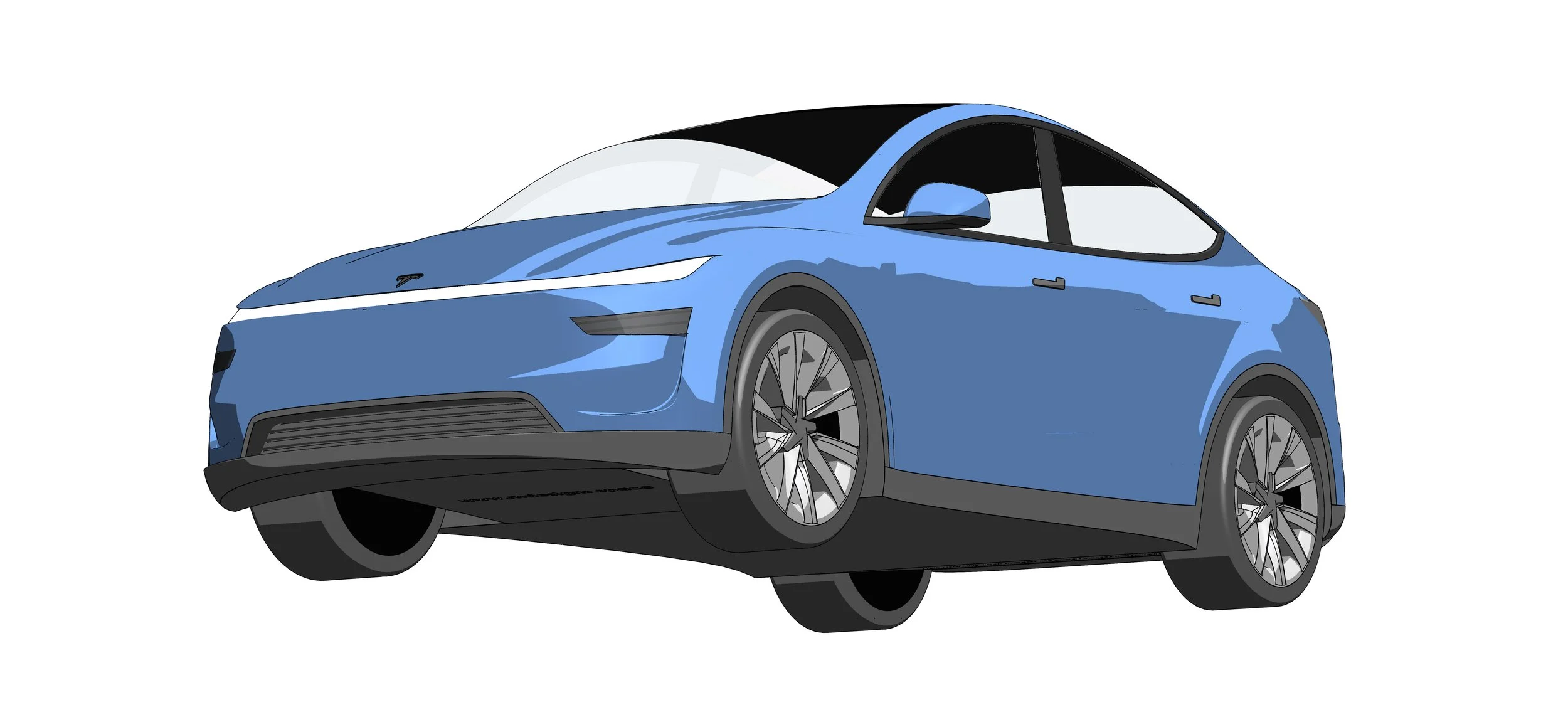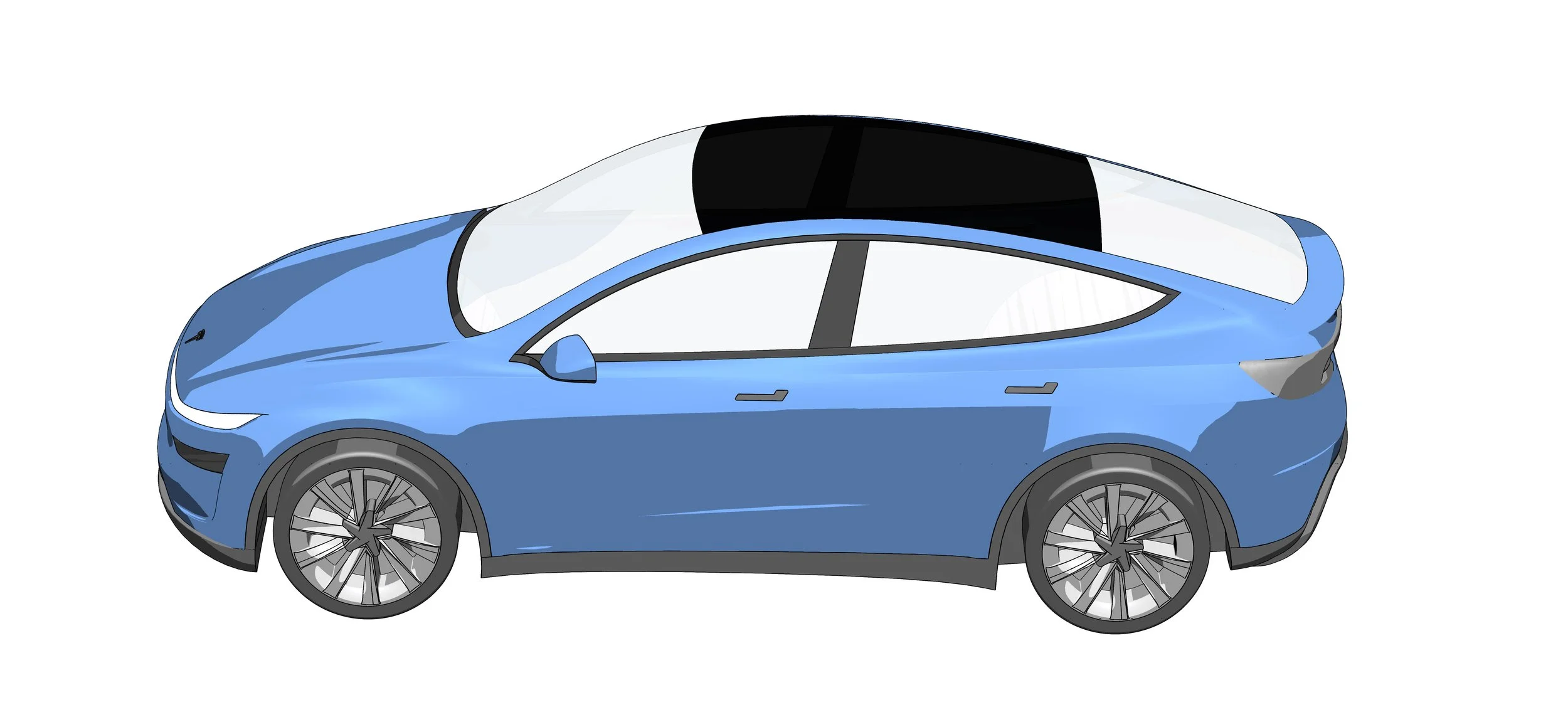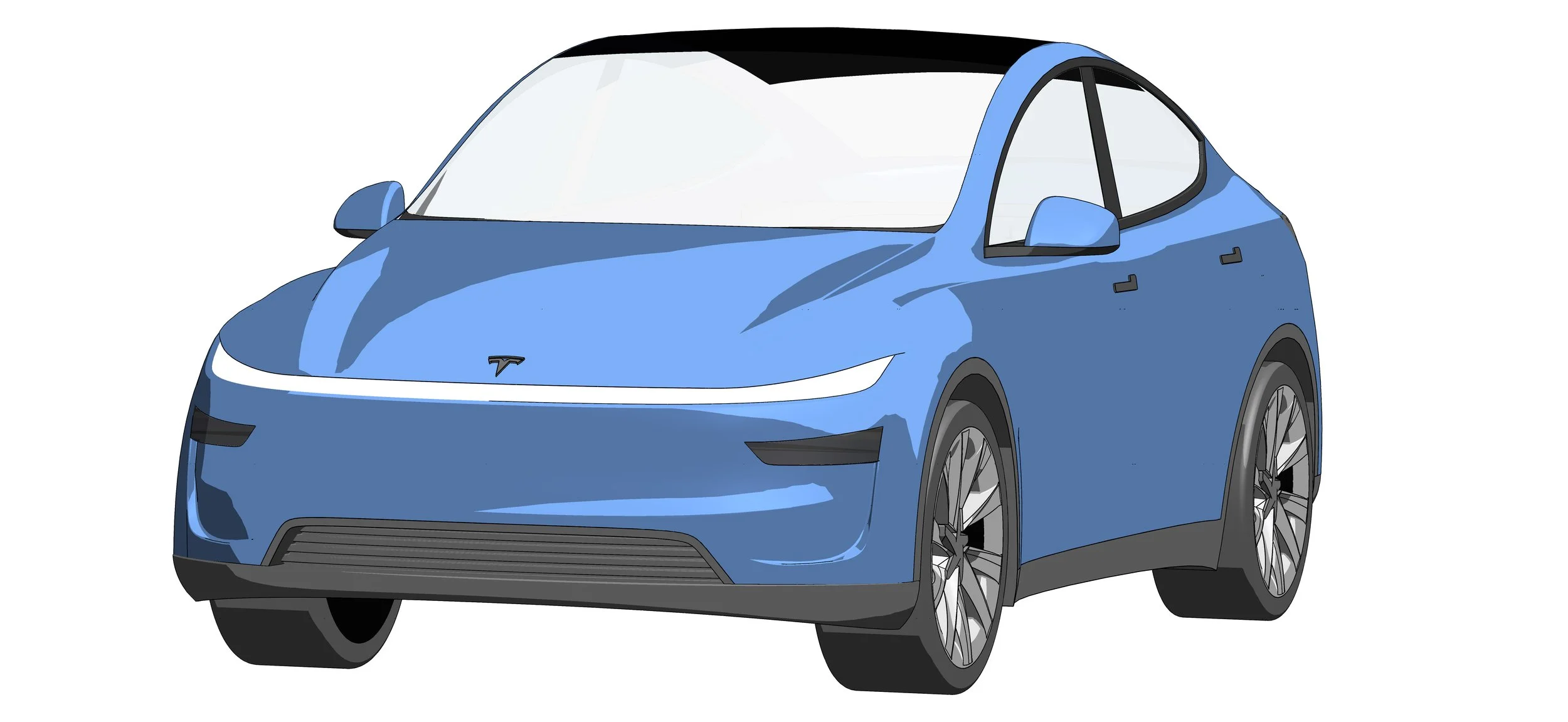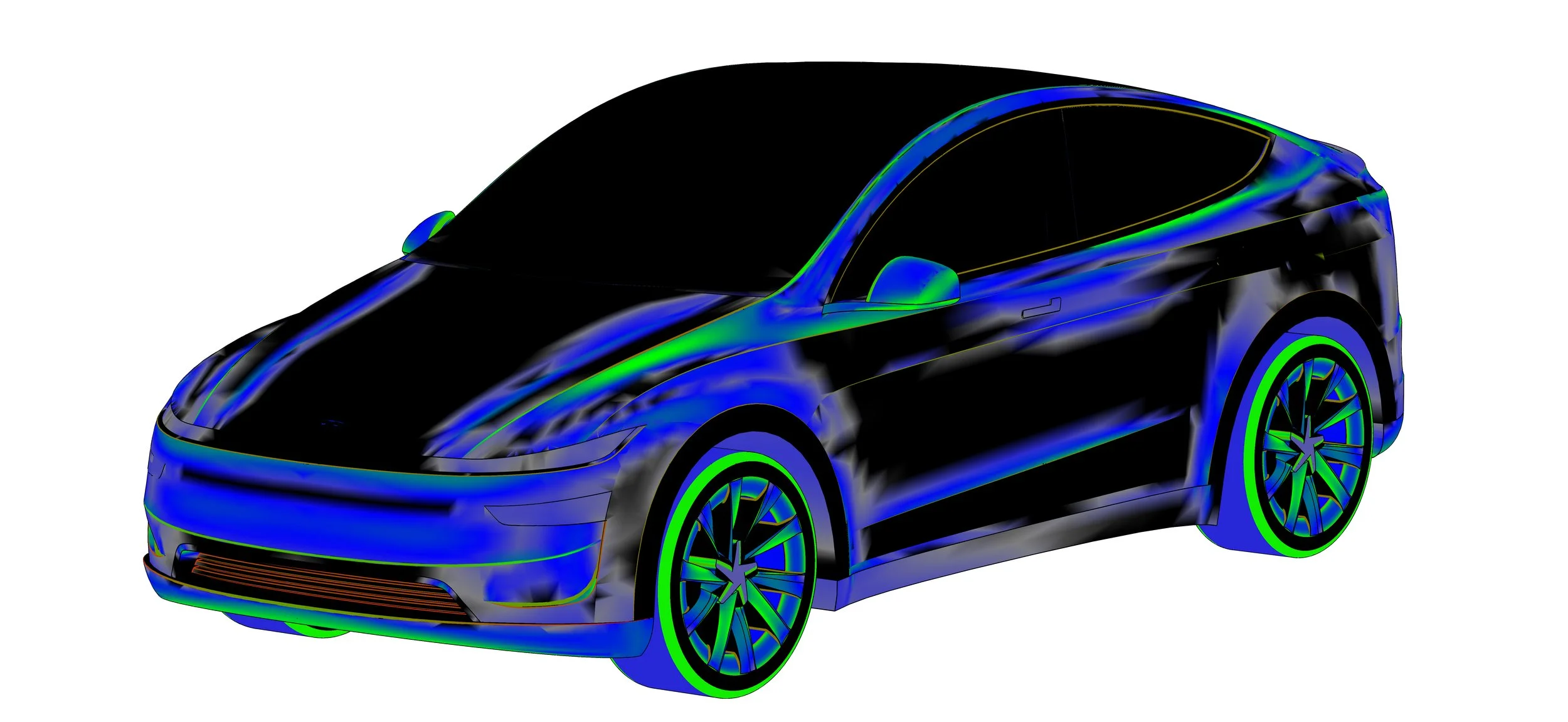Tesla Model Y Refresh - SolidWorks CAD Model
This article gives a brief overview of my model of a Tesla Model Y (refresh/juniper). If you would like access to my CAD files please visit this link
Several years back I modelled a Tesla Model S in SolidWorks. It was an enjoyable challenge for me and greatly helped me develop my surfacing skills. Fast forward to 2025, I wanted to model a Tesla Model Y and improve on my previous surface quality results.
In NURBS based CAD programs (like SolidWorks), it is relatively easy to connect various surfaces together, however, the real challenge lies in ensuring adjacent surfaces are tangent continuous. Tangency continuity between surfaces essentially means a smooth transition between the surfaces - no angle deviations which would give a slight crease or edge.
If you were to run your finger over tangent continuous surfaces the interface would feel smooth. Also, if such surfaces were manufactured in a way that gave a shiny or glossy finish, the reflection of light would look uniform across the boundary between the surfaces.
Images of zebra stripe and curvature tools - used to evaluate tangency and curvature continuity
In many instances tangency continuity isn’t super important. For example, on a 3D printed part, which has a rough surface finish, small scale surface discontinuities would be less prominent that the global surface roughness. High quality surfaces are more important in products that have glossy surface finishes and also where surface quality affects performance - think automobiles and aerodynamic effects in aeroplanes.
Another challenge with complex surfacing in SolidWorks is building a model with a robust and stable feature history tree. I think I did a reasonable job in this model, especially given how many features there are (665). There are some surface features where I can roll back and adjust guide curves and constraints etc. However, there are still a few problematic areas that don’t handle well being changed. An annoying problem I have come across in SolidWorks is that occasionally the tangent direction of style splines will for no apparent reason flip directions upon rebuild.
This brings me to my final point of discussion. SolidWorks is not really well suited for surfacing of such complex models - at least if you want to achieve high quality surfaces with G1-G3 continuity across the entire model. It is ok for surface modelling of relatively simple objects, e.g. hand held consumer products, however, things like cars and planes are generally modelled in CATIA or Alias.
Overall I am happy with my results and my next step will be making a 3D printed remote controlled miniature model I can drive around.
Model consisted of a total of 665 features





